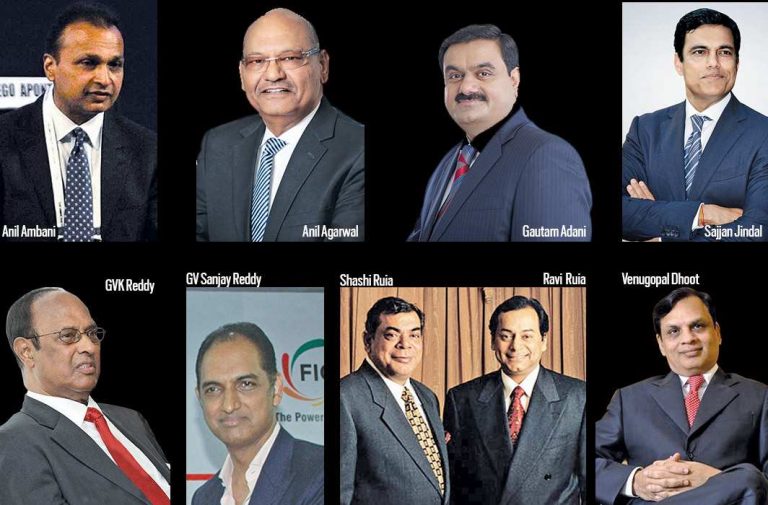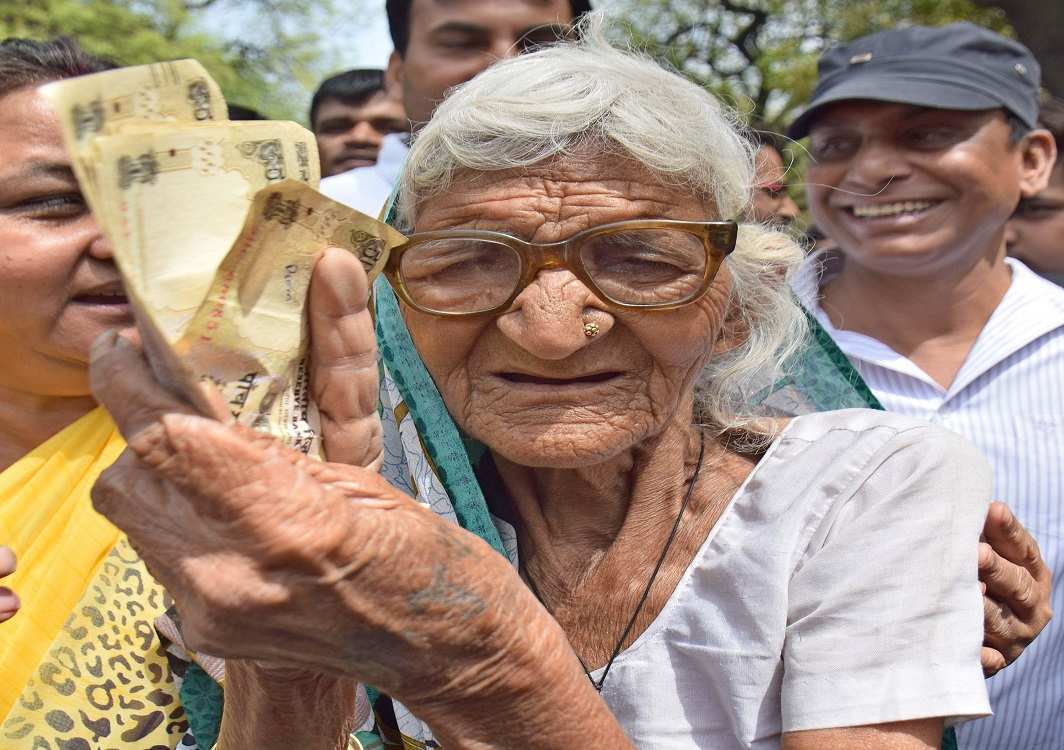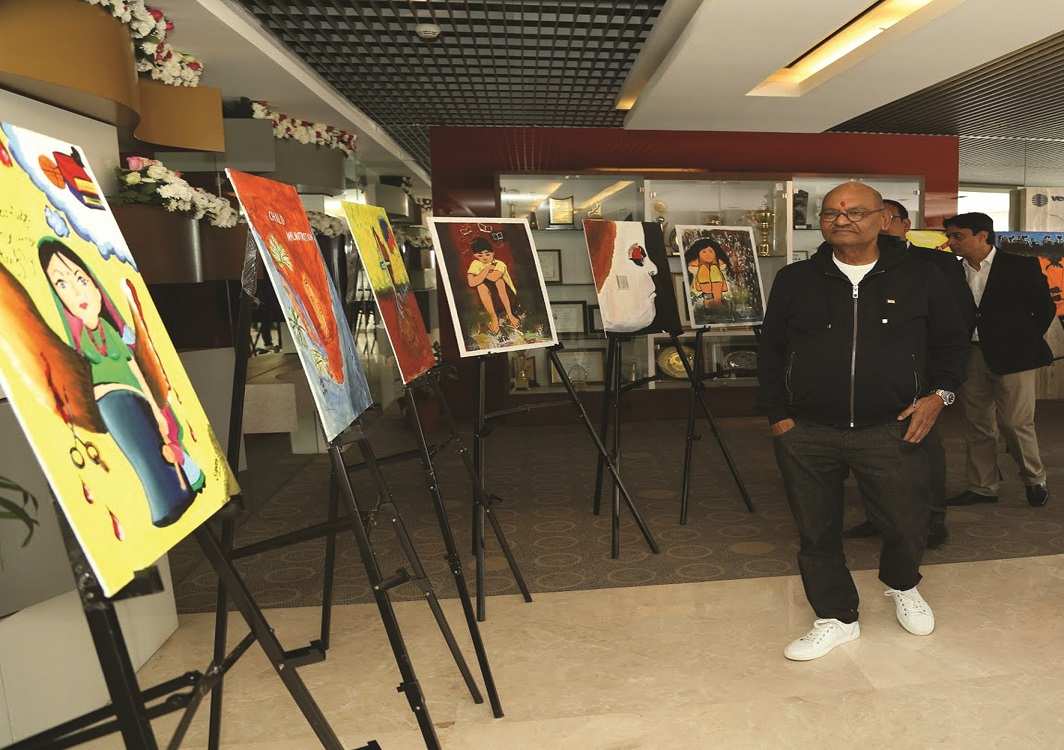
Those responsible for bad debts and NPAs are mainly India’s top business houses. It is the country’s super rich who have caused much of the distress in the banking system. India Legal lists the main players
~By Ajith Pillai
The government’s GDP figures may be impressive, the growth prognosis for the economy bright and the bullish stock market destined to touch record highs, but one negative that looms large over the India Shining story is its banking sector. And what is of particular concern here is the growing volume of bad loans and non-performing assets (NPAs) that are weighing down on the veritable backbone of the financial system.
Various estimates are available to quantify the NPAs and these range from a humongous Rs 5 lakh crore to Rs 8 lakh crore. If we take official figures, as articulated in a written reply by minister of state for finance, Santosh Gangwar in the Rajya Sabha last month, NPAs in commercial banks stood at Rs 6.06 lakh crore (private banks accounted for only Rs 70, 321 crore) as of December 31, 2016. This was an almost threefold increase from where it was (Rs 2.67 lakh crore) at the end of 2015.
Who is responsible for the mess? The obvious culprits are the banks which gave out the loans and the creditors who failed to pay back. But there is another dimension—it is now becoming increasingly clear that those responsible for bad debts and NPAs are in the main India’s top business houses and not the social welfare and farm sectors as is the popular perception. In short, it is the country’s super rich (see accompanying table of monies owed to banks by ten corporate companies) who have caused much of the distress in the banking system.

It is not just that they owe banks money. It is also their blatant refusal to repay despite being flush with funds, that is upsetting. It is by now an open secret that every ruse in the book is employed to stall or evade payments and the banks are known to connive with big business in helping them default. So, what we see are poor companies owned by extremely rich people piling up debts.
As Meera Sanyal, former CEO and chairman of the Royal Bank of Scotland in India, told APN news channel: “The NPA problem is serious. There are still many non-recognised NPAs despite the official figure touted. Former RBI governor Raghuram Rajan had once said that India faces a peculiar situation where there are many sick industries but no corporate honcho is sick. In foreign countries, the responsibility for NPAs is fixed on the concerned bank official and the bank. But in our country, loans are sanctioned one after the other but there is no responsibility or accountability. Monitoring needs to be done on the loans given to corporates. The objectives need to be examined carefully.”
How far is corporate India responsible for the NPA situation? The Public Accounts Committee (PAC) of parliament which has been looking into the bad loans of PSU banks has been very categorical that India Inc. accounts for the major share of bad debts. In fact, last month, PAC chairman KV Thomas revealed at a press briefing that “70 percent of the Rs 6.8 lakh crore NPAs are those of corporate houses” and he said he hopes to list the names of the big defaulters in the PAC report in an effort “to shame them”.
The RBI as well as the banks have been rather secretive in making public the names of corporate debtors. Even when the Supreme Court demanded the top defaulters list last year, it was handed over in a sealed envelope with the assurance that it would be kept confidential. Former Chief Information Commissioner Shailesh Gandhi in a signed piece recalls how he drew a blank after he ordered the RBI to answer eight RTI queries pertaining to top defaulters, bank audits and minutes of RBI board meetings. The central bank refused to divulge any information on the ground that it would “adversely affect the public interest and compromise financial sector stability”.
- Reliance ADAG: The Anil Ambani-led group has a debt of Rs 1.25 lakh crore. Net assets: $29 billion
- Vedanta: Anil Agarwal’s metals and mining enterprise owes Indian banks Rs 1.03 lakh crore. Total assets: $36.98 billion
- Essar: The company run by the Ruia brothers has debts totalling Rs 1.01 lakh crore. Revenue: $27 billion
- Adani Group: It owes banks Rs 96,031 crore. Net assets: $19 billion
- Jaypee Group: Has an outstanding of Rs 75,163 crore. Revenue: $2.1 billion
- JSW Group: Sajjan Jindal is the chairman. It has debts amounting to Rs 58,171 crore. Revenue: $11 billion
- GMR Group: A construction and turnkey projects company, it owes banks Rs 47,976 crore. Revenue: $2 billion.
- Lanco Group: Runs solar and thermal plants. Owes banks Rs 47,102 crore. Revenue: $1.4 billion
- Videocon: This group owes banks Rs 45,405 crore. Revenue: $4.8 billion
- GVK Group: Founded by GVK Reddy, it is into infrastructure, energy and hospitality. It has Rs 34,000 crore as debt. Revenue: $0.47 billion.
—Source: Debt figures are from Credit Suisse AG;
Assets/revenue figures from market estimates
The RBI further elaborated that “disclosure can erode public confidence not only in the inspected entity but in the banking sector as well. This could trigger a ripple effect on the deposits of not only one bank to which the information pertains but others as well due to contagion effect.”
KV Thomas obviously finds the shielding and favouring of corporate defaulters rather peculiar. “In the case of farmers or small traders, banks act tough and go to their houses to recover money. They even get their names and photographs published in newspapers. But when it comes to corporate houses, they don’t even reveal their names,” he says.
The country’s super rich have caused much of the distress in the banking system as they refuse to repay despite being flush with funds.
With such opaqueness in sharing information, whatever listing of top debt ridden companies that are currently available, including any reference to them in this article, is primarily sourced from the 2012 report of the Credit Suisse Group AG titled House of Debt which was updated in 2015. The report observed that the debt of the top ten debtors had risen seven times between 2007-2015 and constituted 12 percent of the loans in the banking system and 27 percent of corporate loans.
Big business and the scale of its exposure to bad debts had earlier come to light when the RBI collated data in 2012-2013 when KC Chakraborty was the deputy governor of the central bank. The exercise was primarily conducted to understand the nature of the debt crisis. It revealed that only 33 percent of the loans were in the government priority social sector, while 67 percent was in the non-priority business sector. As for NPAs, 80-85 percent involved loans to corporates.

Chakraborty earlier told India Legal: “When we talk about Rs 6 lakh crore plus NPAs we are mostly referring to the non-priority sector or the corporate sector. But then, even this figure does not reveal the full picture. What about restructured bad loans under various categories? These are not even considered to be NPAs although they are exactly that though listed under various heads.”
According to experts there are several reasons for the sharp rise in NPAs over the last few years. One factor which should be given weightage is the global economic slowdown which suddenly retarded growth projections in several sectors. But more than that is the manner in which PSU banks dispense loans under political pressure without proper checks on the viability of a project. According to a finance ministry official, the standard practice is to approach the bank with a feasibility report from a high-profile consultant and back it up with political pressure on the bank management. That apparently does the trick and the loan is sanctioned, with the bank making no more than cursory independent checks.
Every ruse in the book is employed to stall or evade payments and the banks are known to connive with big business to help them default.
The banks also favour business houses by “greening or repeated restructuring of debts.” So, in effect, a loan which falls into the NPA category is lifted out of it by recasting the time-frame for repayment. This literally amounts to renewing of a particular loan which will not be reflected as a bad debt in the bank’s balance sheet but would add to the financial stress in the long run. “Your loan can be an NPA last year but when you make some part payment, it will no longer be an NPA. The status keeps shifting. What companies actually do is to cleverly get away from the ambit of NPAs. Sometimes bankers resort to additional funding to borrowers so that they can repay,” said senior Supreme Court lawyer Virendra Ganda in a panel discussion on the India Legal show on APN TV.
Meanwhile, the finance ministry and the RBI are working overtime to resolve the NPA problem. Several options are on the table, including the setting up of a “bad bank” where all the NPAs will be transferred and dealt with separately. But this is said to be a long-term plan. In the interim, the government is toying with the idea of a large-scale auction of debts to private asset reconstruction companies.
But prior to any such move, Finance Minister Arun Jaitley has asked state-owned banks to conduct a “forensic audit” of the top 50 of its defaulters and to identify those who failed to repay loans because of genuine business failure. He asked them to separate these defaulters from those who may have diverted funds to other businesses or illegally siphoned them out of the country. The idea is to take penal action against wilful defaulters and to offer a one-time settlement for the genuine cases. This would involve banks writing off a part of the money owed to them or “taking a haircut.”
According to a report last year by India Ratings, a reputed research agency that looks closely at the Indian business and market landscape, it would take much doing on the part of the government to bring Indian banking on an even keel. It pointed out that at least Rs 4 lakh crore in debt held by “vulnerable” corporates may have to be written off since the recovery mechanism available under “Sustainable Structuring of Stressed Assets (SAA)” was not enough to keep the loans afloat.
If any write off happens, then it will be taxpayers who will have to pay.
Jaitley and the RBI governor Urijit Patel have their task cut out. The duo will have to come up with a unique out-of-the-box solution. Meanwhile, they could also advice banks that huge losses incurred over the years cannot be recovered by charging hapless depositors transaction fees.

